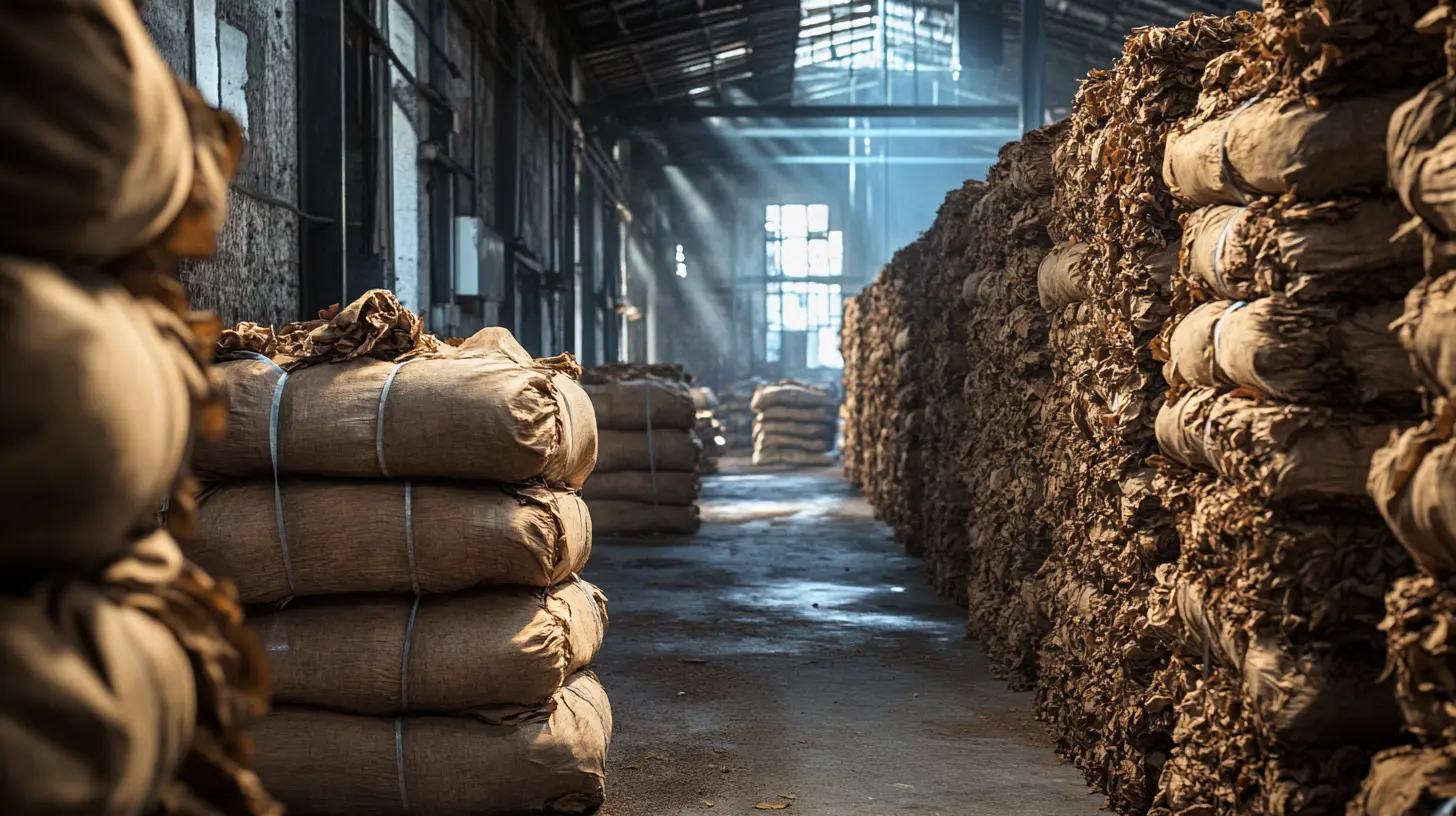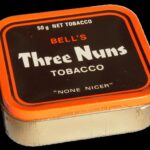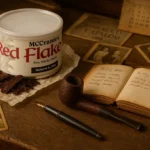Aromatic pipe tobacco has long captivated smokers with its rich scents, inviting flavors, and unparalleled room notes. But behind the enchanting experience lies an intricate combination of processes: casing and topping. These two techniques define the character of aromatic blends, influencing everything from the pouch aroma to the flavor profile and burn quality.
Let’s explore these processes in-depth, examine how they shape the smoking experience, and uncover the artistry that transforms raw tobacco leaves into masterpieces.
Casing: Laying the Foundation
What Is Casing?
Casing is the bedrock of flavoring in aromatic tobacco. This process involves applying a liquid mixture of flavors to raw tobacco early in its production cycle. The goal of casing is to integrate flavor directly into the leaf, enhancing its natural qualities while creating a smooth smoking experience.
Tobacco destined for aromatic blends undergoes casing in specialized facilities where precision and consistency are paramount. Each leaf is carefully treated, ensuring the flavors penetrate deeply.
How Does It Work?
Tobacco leaves are exposed to casing mixtures using two primary methods:
- Dipping: The tobacco is submerged in a solution of flavors and sweeteners, allowing it to absorb the liquid fully.
- Spraying: A fine mist of the casing mixture is applied, ensuring even coverage without over-saturating the leaves.
Once the mixture is applied, the tobacco is left to dry. This drying phase is essential for flavor absorption and helps prepare the leaf for further processing.
Key Roles of Casing
The casing process serves multiple critical functions:
- Balancing Acidity: Many tobaccos are naturally acidic. Casing solutions adjust the pH, making the smoke less harsh and more enjoyable.
- Enhancing Combustion: Proper casing improves how evenly tobacco burns, contributing to a consistent smoking experience.
- Providing a Base Flavor: Casing adds sweetness and richness to the tobacco, creating a neutral yet supportive foundation for additional flavors.
Ingredients in Casing Mixtures
Casing solutions are carefully crafted to complement the natural tobacco flavors without overpowering them. Common ingredients include:
- Sweeteners: Honey, corn syrup, and invert sugar are staples.
- Botanical Extracts: Cocoa and licorice add depth and smoothness.
- Fruits: Subtle hints of apple, plum, or cherry are often included.
- Moisture Retainers: Glycerin and propylene glycol prevent the tobacco from drying out.
For blenders, crafting the perfect casing recipe is an art. It requires a deep understanding of how flavors interact with different tobacco types, such as the sweetness of Virginias or the nuttiness of Burleys.
Topping: The Final Flourish
What Sets Topping Apart?
While casing creates the foundation, topping defines the personality of aromatic tobacco. This process involves adding highly aromatic and concentrated flavoring agents near the end of production. Toppings sit on the surface of the tobacco leaves, providing an immediate burst of flavor when the tobacco is smoked.
The Topping Process
Once the cased tobacco is processed and dried, it is ready for topping. The mixture is typically alcohol-based, as alcohol serves as an excellent carrier for aromatic compounds. The application is usually done by spraying the topping solution while the tobacco is gently tumbled in large rotating drums.
Unlike casing, which penetrates the tobacco, topping is designed to remain on the surface. This difference gives toppings their signature strength in aroma and flavor but also makes them more ephemeral during smoking.
How Topping Enhances the Smoking Experience
Topping is responsible for many of the features that make aromatic tobaccos so popular:
- Tin Note: The aroma that greets you when you open the pouch or tin comes primarily from the topping.
- Room Note: The fragrant and inviting smell that lingers in the air is another hallmark of topping.
- Flavor Impact: While casing provides depth, topping delivers the immediate “top notes” that captivate the smoker.
Popular Topping Ingredients
The range of flavors used in toppings is extensive, catering to diverse palates. Common examples include:
- Fruits: Cherry, apple, peach, and berries
- Dessert Flavors: Vanilla, caramel, chocolate, and maple
- Spices: Cinnamon, nutmeg, and anise
- Alcoholic Notes: Rum, whiskey, and brandy
Each topping is tailored to harmonize with the base tobacco and the casing, ensuring a balanced and cohesive smoking experience.
The Science Behind Flavor Retention
The method of application and the specific ingredients used in casing and topping determine how flavors evolve during smoking. Here’s how these factors influence the smoker’s experience:
Dipping vs. Spraying
| Method | Flavor Penetration | Smoking Impact |
|---|---|---|
| Dipping | Deep absorption, longer-lasting | More consistent flavor throughout |
| Spraying | Surface-level, fades quicker | Intense early flavor, diminishes |
Tobacco that is dipped often has a richer, more integrated flavor, while sprayed toppings offer a vibrant but fleeting sensory impact.
Moisture Control
Aromatic blends are more prone to excess moisture due to the sugars and humectants in their casing and topping. Proper drying and aging processes ensure the tobacco is easy to smoke while retaining its flavors.
Exploring the Role of Humectants
Humectants like glycerin and propylene glycol are frequently used in casing and topping to maintain moisture levels. These substances:
- Prevent the tobacco from drying out during storage
- Enhance smoke smoothness by reducing harshness
- Help carry and retain flavors in both casing and topping solutions
However, overuse of humectants can lead to issues like gurgling or a sticky residue in pipes, so achieving the right balance is critical.
Crafting Aromatic Blends: The Blender’s Perspective
Balancing Complexity
Aromatic blends often combine multiple types of tobacco to achieve the desired balance. For example:
- Virginia: Provides natural sweetness and a mild base.
- Burley: Adds nuttiness and absorbs flavors well.
- Cavendish: Acts as the perfect carrier for casing and topping, amplifying sweetness.
Blenders must account for the interplay between these components, ensuring that no single element dominates the blend.
The Importance of Aging
Some aromatic tobaccos benefit from aging, which allows the flavors from the casing and topping to meld with the natural tobacco characteristics. Aging also mellows any harsh edges, resulting in a smoother and more refined smoke.
Challenges for Smokers
While aromatic blends are beloved for their flavor and aroma, they come with unique challenges:
- Burning Hot: High sugar content can cause aromatic tobaccos to burn hotter, requiring slower smoking.
- Flavor Fade: Toppings often lose their intensity mid-bowl, leaving only the base flavors.
- Pipe Maintenance: Aromatics can leave more residue in pipes, necessitating regular cleaning.
Experienced smokers often recommend breaking in a pipe with non-aromatic blends before dedicating it to aromatics.
Aromatics vs. Non-Aromatics: A Comparison
| Feature | Aromatic Blends | Non-Aromatic Blends |
|---|---|---|
| Flavoring | Added through casing and topping | Natural tobacco flavors only |
| Tin Aroma | Sweet and fragrant | Earthy or spicy |
| Room Note | Crowd-pleasing | Subtle to neutral |
| Smoking Technique | Requires slower, gentler puffing | More forgiving |
Both categories have their merits, but the added flavoring in aromatics makes them especially appealing to new smokers and casual enthusiasts.
Conclusion: A Symphony of Flavor
The processes of casing and topping are a testament to the artistry involved in crafting aromatic pipe tobaccos. Through meticulous blending, precise application, and a deep understanding of flavor dynamics, tobacco blenders create products that delight the senses and elevate the smoking experience.
Whether you savor the fruity brightness of a cherry Cavendish or the creamy richness of a vanilla blend, you’re enjoying the results of centuries of craftsmanship and innovation.
The next time you pack your pipe, consider the journey your tobacco has taken—from raw leaf to cased foundation to topped perfection. Behind every puff lies a story of tradition, science, and artistry that transforms smoking into an experience worth savoring.





